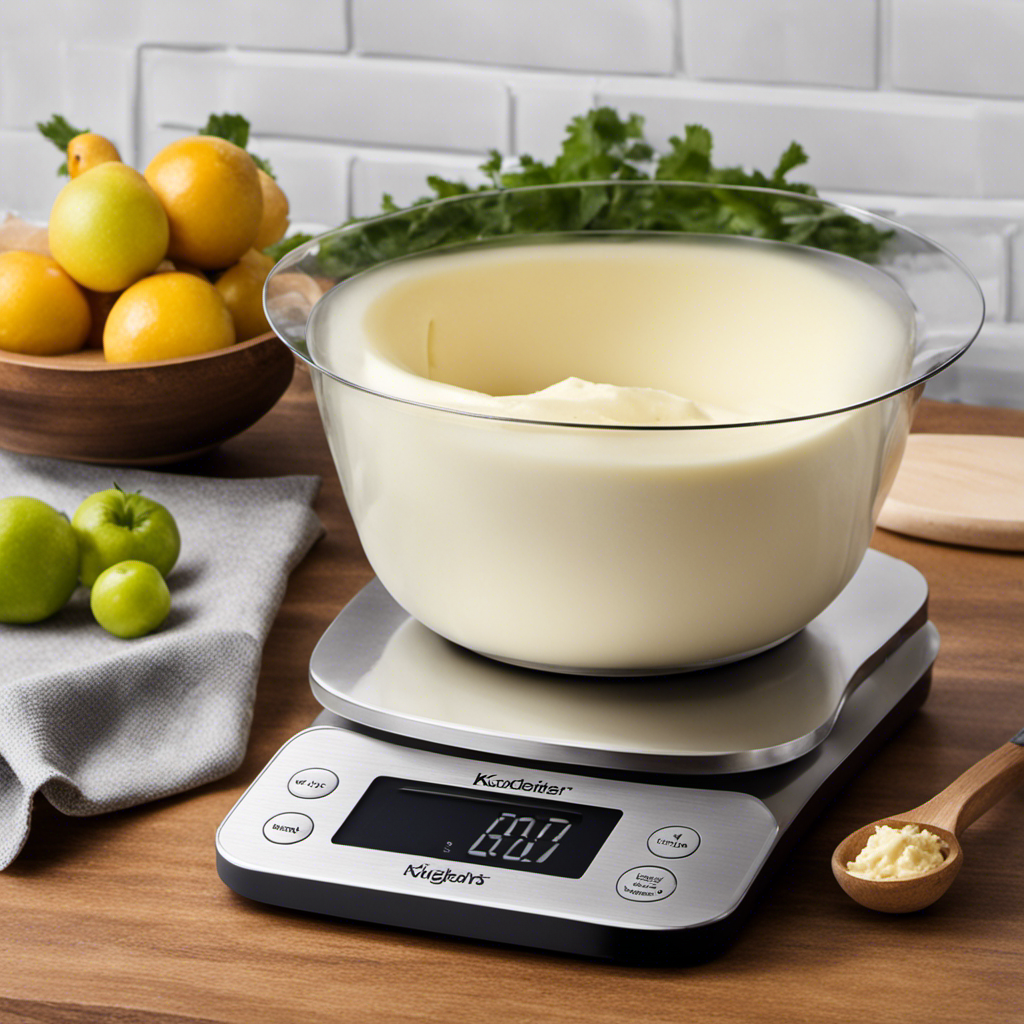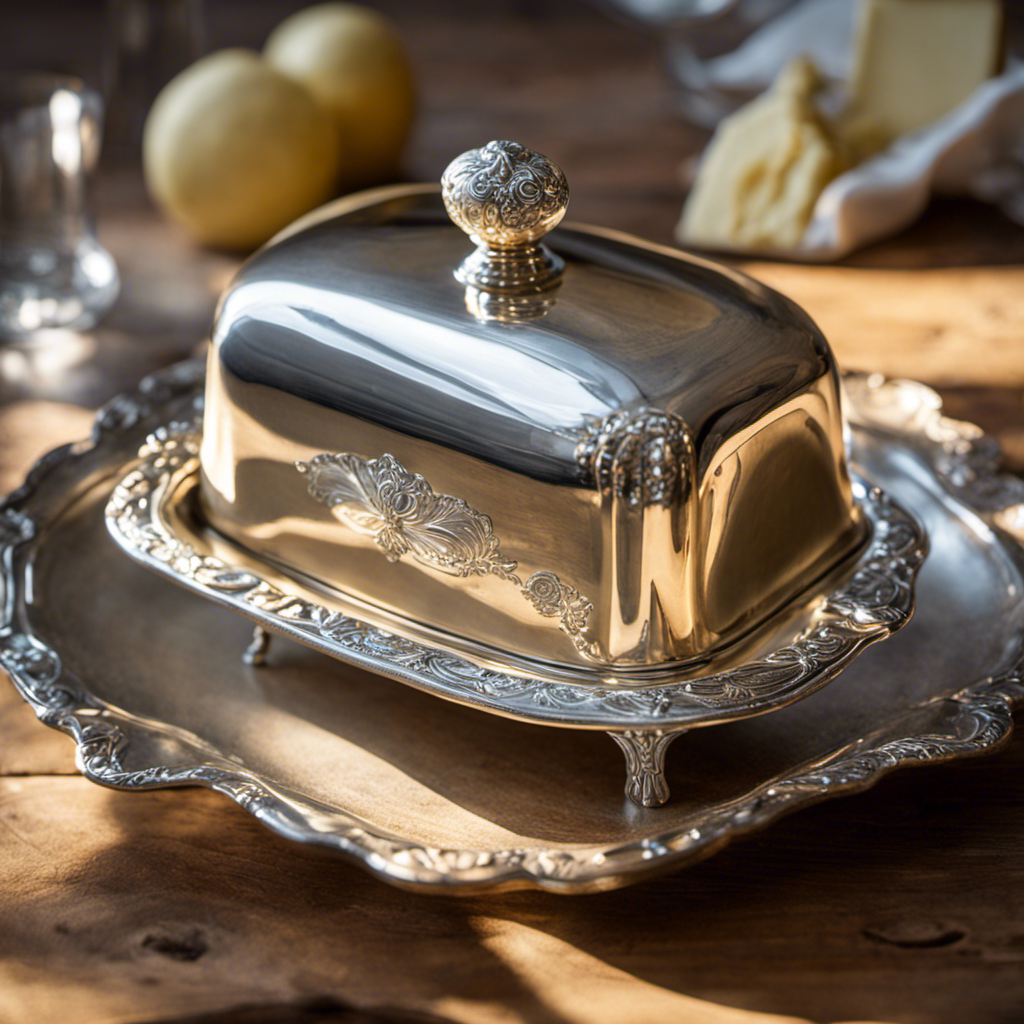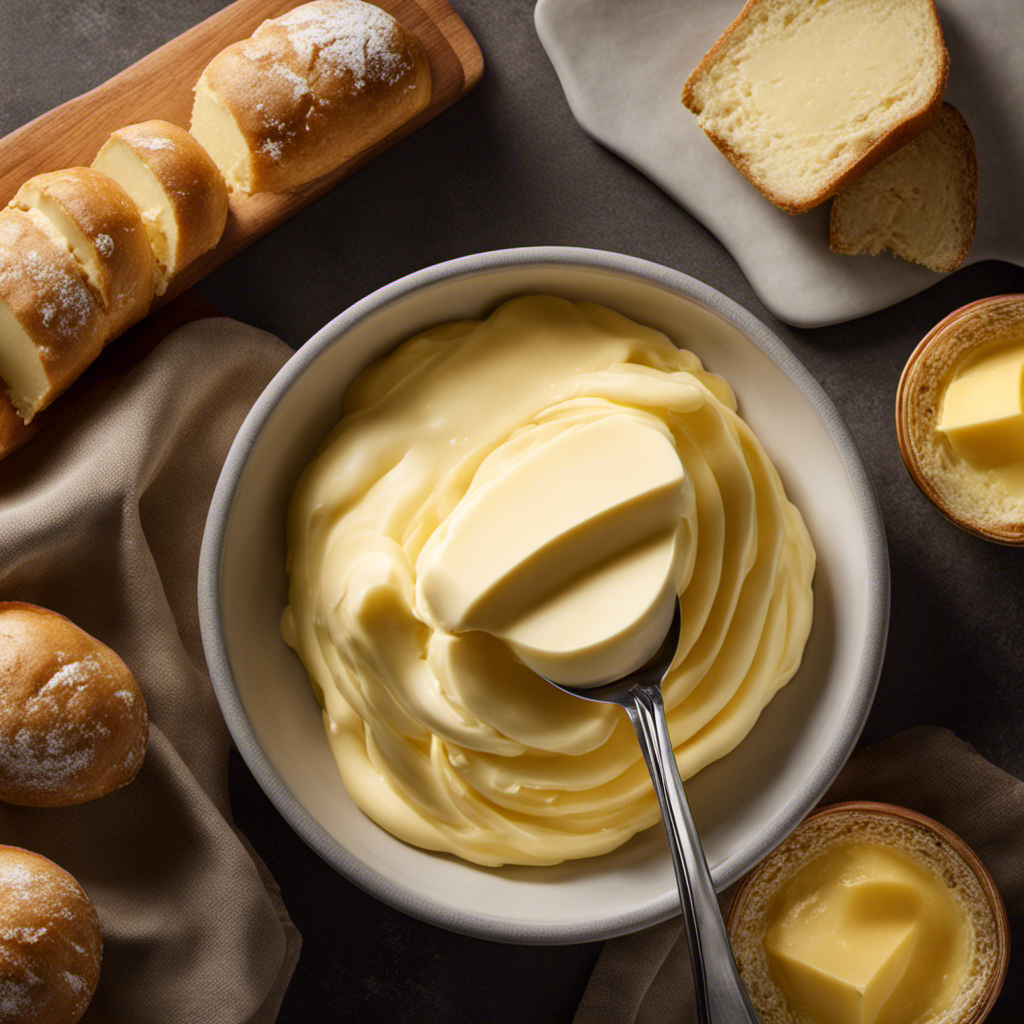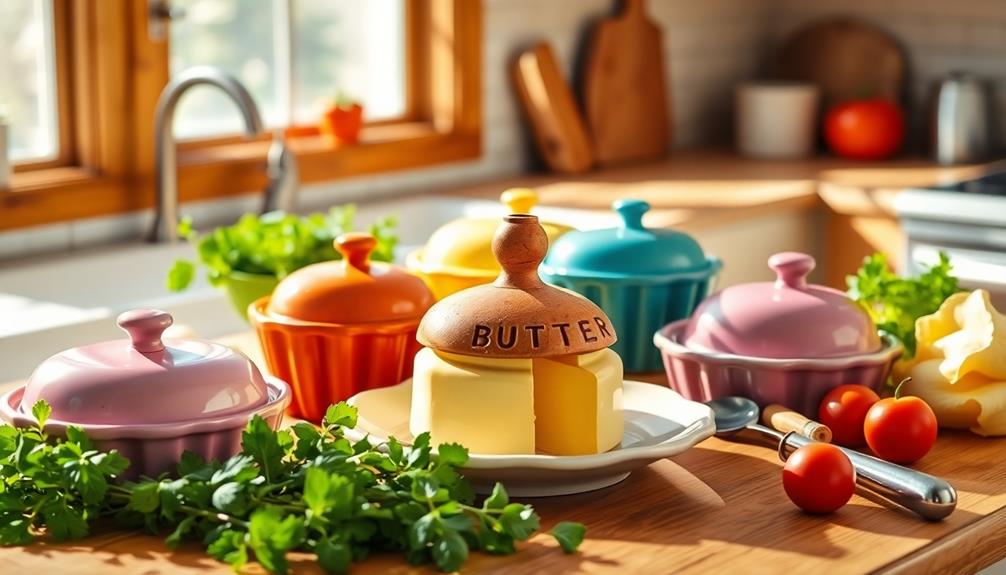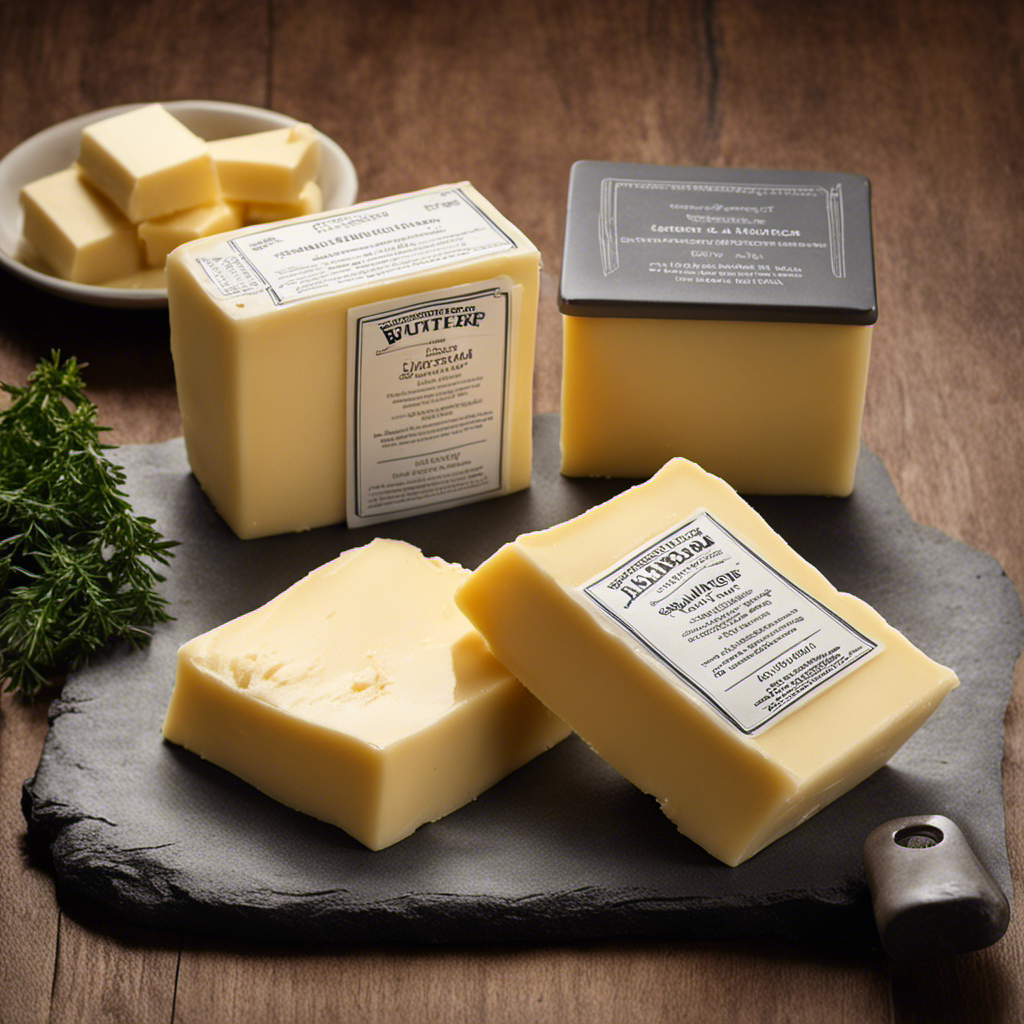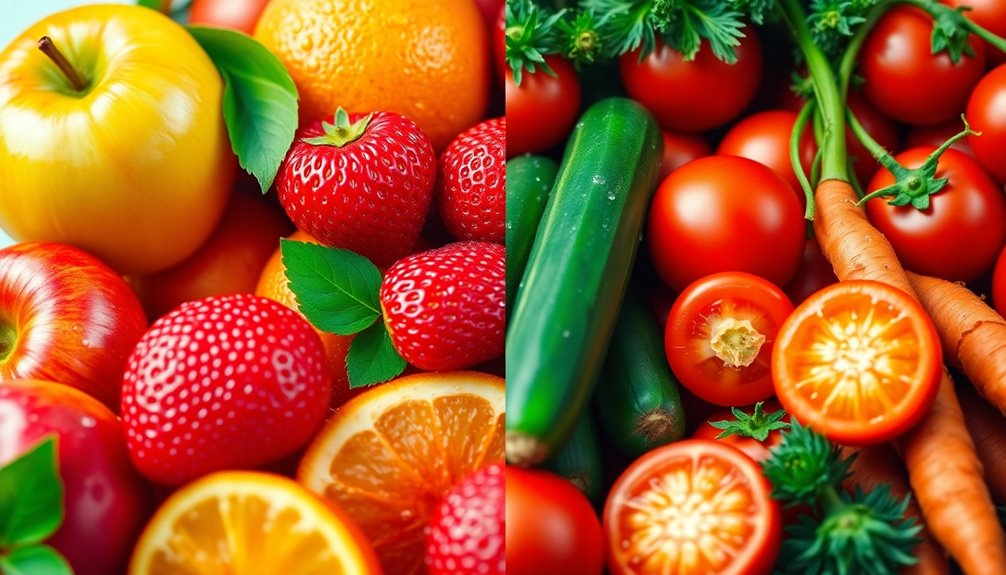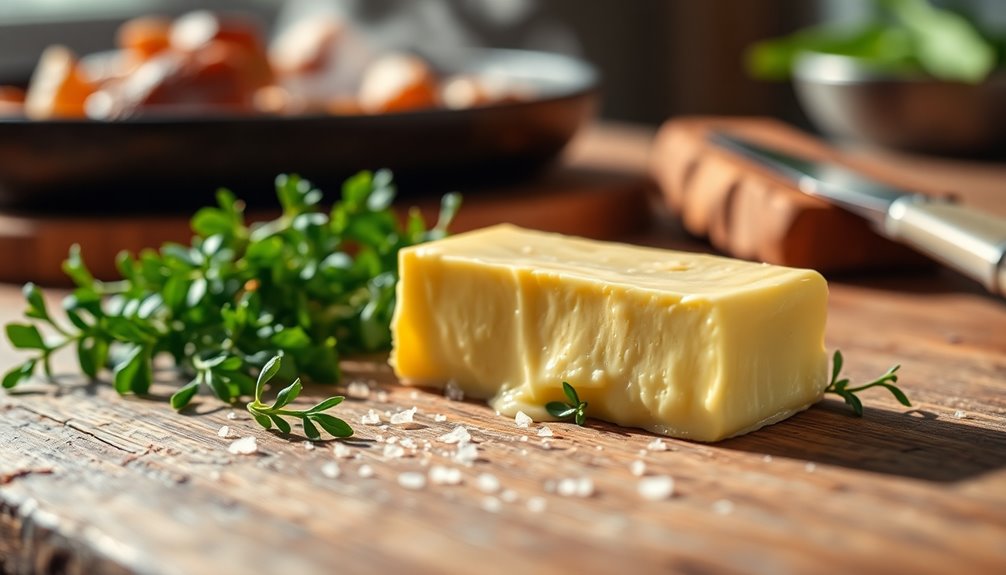Frequently, I catch myself in the kitchen, looking at a recipe that requires 200 grams of butter. But truly, what does that amount to? The process of converting measurements can be irritating, leaving you questioning whether you’ve put in an excess or insufficient amount.
That’s why I decided to do some research and uncover the exact weight and volume of 200 grams of butter. In this article, I’ll share with you the facts, measurements, and even some tips for baking and cooking with this precise amount of butter.
So let’s dive in and demystify the world of 200 grams of butter.
Key Takeaways
- 200 grams of butter is equivalent to approximately 7 ounces or 14 tablespoons.
- To convert 200 grams of butter to other units, divide by 1000 to get 0.2 kilograms.
- One stick of butter weighs 113 grams, so 200 grams is approximately 1.77 sticks.
- Vegetable oil can be used as an equal substitute for 200 grams of butter, providing similar moisture and fat content.
The Weight of 200 Grams of Butter
You might be wondering, how much is 200 grams of butter? When it comes to measuring butter accurately, it’s important to use a kitchen scale for precise results.
Butter is usually sold in sticks or blocks, and the weight can vary depending on the brand and type. 200 grams of butter is equivalent to approximately 7 ounces or 14 tablespoons.
It’s worth noting that butter can be stored in the refrigerator for up to a month, or in the freezer for several months. To maintain its quality, it is best to keep butter wrapped tightly in its original packaging or in an airtight container.
Now that we know the weight of 200 grams of butter, let’s explore how it can be converted to other units.
Converting 200 Grams of Butter to Other Units
To convert 200 grams of butter to other units, simply divide by 1000 to get 0.2 kilograms.
Here are four different units you can use to measure butter:
-
Ounces: 200 grams of butter is equivalent to 7.05 ounces.
-
Cups: The conversion is not straightforward as butter’s density varies. However, a rough estimate is that 200 grams of butter is roughly 0.88 cups.
-
Tablespoons: One tablespoon of butter weighs approximately 14 grams. Therefore, 200 grams of butter is approximately 14.3 tablespoons.
-
Butter Sticks: In the United States, butter is commonly sold in 1/2 cup or 1/4 pound sticks. One stick of butter usually weighs 113 grams. Therefore, 200 grams of butter is approximately 1.77 sticks.
When measuring butter, it is important to note that there are also butter substitutes available for those who prefer or require a non-dairy option. These substitutes can be made from oils, such as olive oil or coconut oil, or from plant-based ingredients like nuts or soy. It is essential to check the ingredient list and nutritional information on the packaging to ensure that the substitute meets your dietary needs and preferences.
How to Measure 200 Grams of Butter
When measuring 200 grams of butter, it’s helpful to divide by 1000 to get 0.2 kilograms.
Measuring butter accurately is crucial for successful recipe outcomes. To ensure precise measurements, it is recommended to use a kitchen scale rather than relying on volume measurements such as cups or tablespoons.
Butter can be dense, and its volume can vary depending on its temperature and composition. By using a scale, you can accurately measure the exact amount of butter required for your recipe.
When using 200 grams of butter in recipes, it’s important to note that this measurement refers to the weight of the butter, not its volume. Understanding the volume of 200 grams of butter will help you achieve the desired consistency and texture in your dishes.
Understanding the Volume of 200 Grams of Butter
Understanding the volume of 200 grams of butter can greatly impact the consistency and texture of your dishes. Here are four important facts to consider:
-
Measuring accuracy: When measuring butter, it’s crucial to use a reliable kitchen scale to ensure accuracy. Eyeballing or estimating can lead to inconsistent results.
-
Melting point: Butter has a relatively low melting point, around 32-35 degrees Celsius. This means it can easily melt and change its volume when exposed to heat.
-
Density: Butter has a higher density compared to other ingredients, such as water or flour. This means that 200 grams of butter will occupy less volume than 200 grams of a less dense ingredient.
-
Impact on recipes: Using the correct volume of butter is essential for achieving the desired texture in your recipes. Too little or too much butter can affect the moisture, tenderness, and overall quality of your dishes.
Baking With 200 Grams of Butter
When it comes to baking, the texture and flavor impact of the ingredients used is crucial. Different fats, such as butter and margarine, can have a significant effect on the final product.
Additionally, for those looking for alternative substitutes, it’s important to consider the impact on both texture and flavor. In this discussion, we will explore the scientific evidence and research findings surrounding the texture and flavor impact of different fats in baking, as well as alternative substitutes and the ongoing debate of butter versus margarine.
Texture and Flavor Impact
The texture and flavor of butter can be impacted by using different amounts in a recipe. Here are four ways in which the amount of butter can affect the final product:
-
Flavor variations: Butter contributes a rich and creamy taste to baked goods. Using more butter can intensify the buttery flavor, while using less can result in a milder taste.
-
Texture control: Butter adds moisture and tenderness to baked goods. Increasing the amount of butter can make the texture softer and more crumbly, while reducing it can result in a drier and firmer texture.
-
Melting point: Butter has a low melting point, and using more in a recipe can cause baked goods to spread and flatten more during baking. Using less butter can help maintain the shape and height of the final product.
-
Browning effect: Butter contains milk solids that contribute to the browning of baked goods. Using more butter can result in a darker and more caramelized crust, while using less can lead to a lighter and more delicate color.
Considering these factors, it is important to carefully measure and adjust the amount of butter in a recipe to achieve the desired texture and flavor.
Transitioning to the subsequent section about alternative substitutes, let’s explore other options for those looking to reduce or replace butter in their recipes.
Alternative Substitutes
To achieve a healthier option in recipes, you can opt for alternative substitutes to reduce or replace butter.
Butter alternatives can provide similar texture and flavor while offering a healthier choice.
One option is using avocado as a substitute for butter. Avocado is rich in healthy fats and can provide a creamy texture in recipes.
Another alternative is using Greek yogurt, which can add moisture and richness to baked goods.
Coconut oil is also a popular choice, as it contains medium-chain triglycerides that are metabolized differently in the body compared to other fats.
However, it is important to note that while these alternatives can offer healthier options, moderation is still key.
It is always recommended to consult with a nutritionist or dietitian to determine the best butter alternative for individual dietary needs.
Butter Vs Margarine
There are several differences between butter and margarine. Here are four key points to consider when comparing these two popular spreads:
-
Composition: Butter is made from the butterfat of milk, while margarine is typically made from vegetable oils. This difference in composition affects the taste, texture, and nutritional content of the two products.
-
Nutritional Differences: Butter contains saturated fats and cholesterol, while margarine is often lower in saturated fats and may contain unsaturated fats. However, some margarines may also contain trans fats, which are considered less healthy than saturated fats.
-
Cooking Properties: Butter has a lower smoke point than margarine, making it better for low to medium heat cooking. Margarine, on the other hand, has a higher smoke point, making it suitable for higher temperature cooking methods.
-
Butter vs Ghee: Ghee is a type of clarified butter that has been used in traditional Indian cooking for centuries. Ghee is made by simmering butter, which removes the water and milk solids, resulting in a rich, nutty flavor. Ghee has a higher smoke point than butter and is often preferred for certain cooking techniques.
It’s important to consider these factors when choosing between butter and margarine, as their nutritional differences can impact your overall health and dietary goals.
Cooking Tips for Using 200 Grams of Butter
If you’re wondering how much 200 grams of butter is, it’s equivalent to about 7 ounces. When it comes to measuring butter accurately, using a kitchen scale is the best method. This ensures that you have the exact amount needed for your recipe.
When cooking with butter, there are various techniques you can employ. For example, when sautéing, it’s important to melt the butter over medium heat to prevent it from burning.
Clarifying butter is another technique commonly used in cooking. This involves separating the milk solids from the fat, resulting in a higher smoke point and a more stable cooking oil.
Additionally, butter can also be used for basting, where it is melted and brushed onto meats or vegetables during the cooking process to enhance flavor and moisture.
200 Grams of Butter in Recipes
When it comes to butter measurement conversions, it’s important to have accurate information to ensure the success of your recipes. As a food scientist, I can provide you with the precise measurements and conversions for 200 grams of butter.
Additionally, I will discuss substitutes for 200 grams of butter and share some delicious recipes that specifically call for this amount of butter.
Let’s dive into the world of butter in cooking and explore these topics together.
Butter Measurement Conversions
To measure 200 grams of butter, you’ll need a kitchen scale. Here is a butter conversion chart to help you understand different measurements of butter:
- 1 stick of butter = 113 grams
- 1 cup of butter = 227 grams
- 1 tablespoon of butter = 14 grams
- 1 teaspoon of butter = 5 grams
When melting 200 grams of butter, it is important to use a method that ensures even heating and prevents burning. I recommend using a double boiler or a microwave-safe bowl to melt the butter slowly and evenly. It is essential to monitor the temperature to avoid overheating and altering the butter’s properties.
Remember to always follow a recipe’s specific instructions when it comes to measurements, as different recipes may require different amounts and forms of butter.
Substitutes for 200g Butter
One option you have for substituting 200g of butter is using an equal amount of vegetable oil. Vegetable oil is a common alternative ingredient for butter in baking and cooking. It provides a similar level of moisture and fat content, making it a suitable replacement. However, it is important to note that the flavor and texture of the final product may be slightly different. To help you understand the differences between butter and vegetable oil, here is a table comparing their nutritional composition:
| Nutritional Component | Butter (per 100g) | Vegetable Oil (per 100g) |
|---|---|---|
| Total Fat | 81g | 100g |
| Saturated Fat | 51.4g | 13.6g |
| Cholesterol | 215mg | 0mg |
| Vitamin E | 2.3mg | 14.3mg |
| Vegan-Friendly | No | Yes |
As you can see, vegetable oil is a vegan-friendly option and contains less saturated fat and cholesterol compared to butter. However, butter provides a richer flavor and better texture in certain recipes. Choose the substitute that best suits your dietary needs and preferences.
Recipes Using 200g Butter
Using 200g of butter in recipes can result in rich and flavorful dishes. Here are four delicious ways to use this amount of butter:
-
Buttercream Frosting: Whip together 200g of butter with powdered sugar and vanilla extract to create a creamy and smooth frosting. Perfect for decorating cakes and cupcakes.
-
Savory Butter Sauces: Melt 200g of butter and add herbs, garlic, or lemon juice to create a savory butter sauce. Drizzle it over grilled meats, seafood, or steamed vegetables for an extra burst of flavor.
-
Butter Cookies: Cream together 200g of butter with sugar, flour, and your choice of flavorings like chocolate chips or nuts. Roll the dough into balls and bake them for delicious, melt-in-your-mouth cookies.
-
Buttered Toast: Spread 200g of softened butter on warm toast for a simple and satisfying breakfast or snack.
Different Types of Butter and Their Weights
There’s a variety of butter types and their weights differ. When it comes to measuring butter accurately, it’s important to understand the differences between the various types available. To help you visualize the variations in weight, I’ve prepared a table showcasing the weights of different types of butter:
| Butter Type | Weight (per tablespoon) |
|---|---|
| Salted Butter | 14 grams |
| Unsalted Butter | 14 grams |
| Clarified Butter | 13 grams |
| Vegan Butter | 11 grams |
As you can see, the weights vary slightly depending on the type of butter. It’s worth noting that there are also nutritional differences in types of butter. Salted butter contains added salt, which can affect your sodium intake. Unsalted butter, on the other hand, provides a more neutral taste and allows you to control the amount of salt in your recipe. Clarified butter is butter that has had the milk solids removed, resulting in a higher smoke point and a longer shelf life. Vegan butter, made from plant-based oils, is a suitable option for those following a vegan or dairy-free diet.
Substitutes for 200 Grams of Butter
If you’re looking for a substitute for 200 grams of butter, you can try using mashed avocado as a healthier alternative. Here are four alternative options to consider:
-
Mashed Avocado: Avocados are rich in healthy fats and provide a creamy texture similar to butter. They also offer health benefits such as being high in monounsaturated fats and vitamin E.
-
Coconut Oil: Coconut oil is a plant-based fat that can be used as a substitute for butter in baking and cooking. It contains medium-chain fatty acids and has been linked to various health benefits, including improved digestion and heart health.
-
Greek Yogurt: Greek yogurt can be used as a replacement for butter in recipes. It adds moisture and creaminess while reducing the overall fat content. Greek yogurt is also high in protein and calcium.
-
Nut Butters: Almond or peanut butter can be used as an alternative to butter in spreads or baking. They provide a rich flavor and are packed with healthy fats, protein, and fiber.
These alternative options not only provide different flavors and textures but also offer various health benefits. Experiment with these alternatives to find the one that suits your taste and dietary needs.
Frequently Asked Questions
Can I Use Margarine Instead of Butter in Recipes That Call for 200 Grams of Butter?
Yes, you can use margarine instead of butter in recipes that call for 200 grams of butter. Margarine is a healthier alternative and there are different types of butter substitutes available.
How Many Tablespoons Are in 200 Grams of Butter?
To convert grams to tablespoons, it’s important to know the density of the substance. As a food scientist, I can say that 200 grams of butter is approximately 14 tablespoons.
Is It Possible to Measure 200 Grams of Butter Without a Kitchen Scale?
It is possible to measure 200 grams of butter without a kitchen scale by using alternative methods such as converting measurements. These methods can be helpful when a scale is not available or if you prefer to use different units of measurement.
Are There Any Health Benefits to Using 200 Grams of Butter in Cooking?
There are no health benefits to using 200 grams of butter in cooking. It is important to be aware of the health risks associated with consuming excessive amounts of saturated fat. There are alternatives available that can provide similar flavors and textures in cooking.
Can I Use Clarified Butter Instead of Regular Butter in Recipes That Require 200 Grams of Butter?
Yes, clarified butter can be used as an alternative to regular butter in recipes that require 200 grams. It has a higher smoke point and removes impurities, making it ideal for cooking. Clarified butter adds a rich flavor to dishes.
Conclusion
In conclusion, 200 grams of butter is a versatile ingredient that can be used in various recipes and cooking methods.
It is important to measure the butter accurately to ensure the desired results. Different types of butter may have slightly different weights, so it is essential to consider the specific type being used.
Additionally, there are alternatives available for those who prefer not to use butter or need a substitute.
Overall, understanding the weight and measurement of 200 grams of butter can enhance your cooking and baking experiences.
